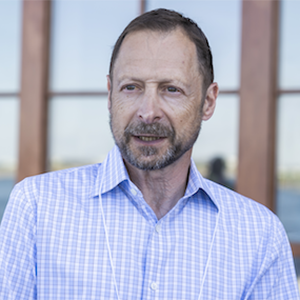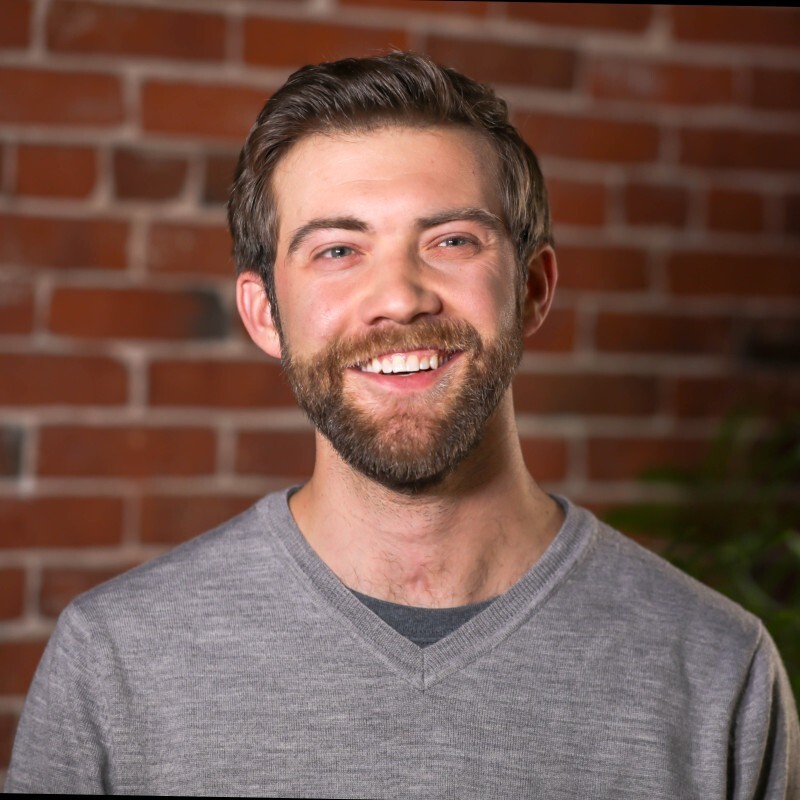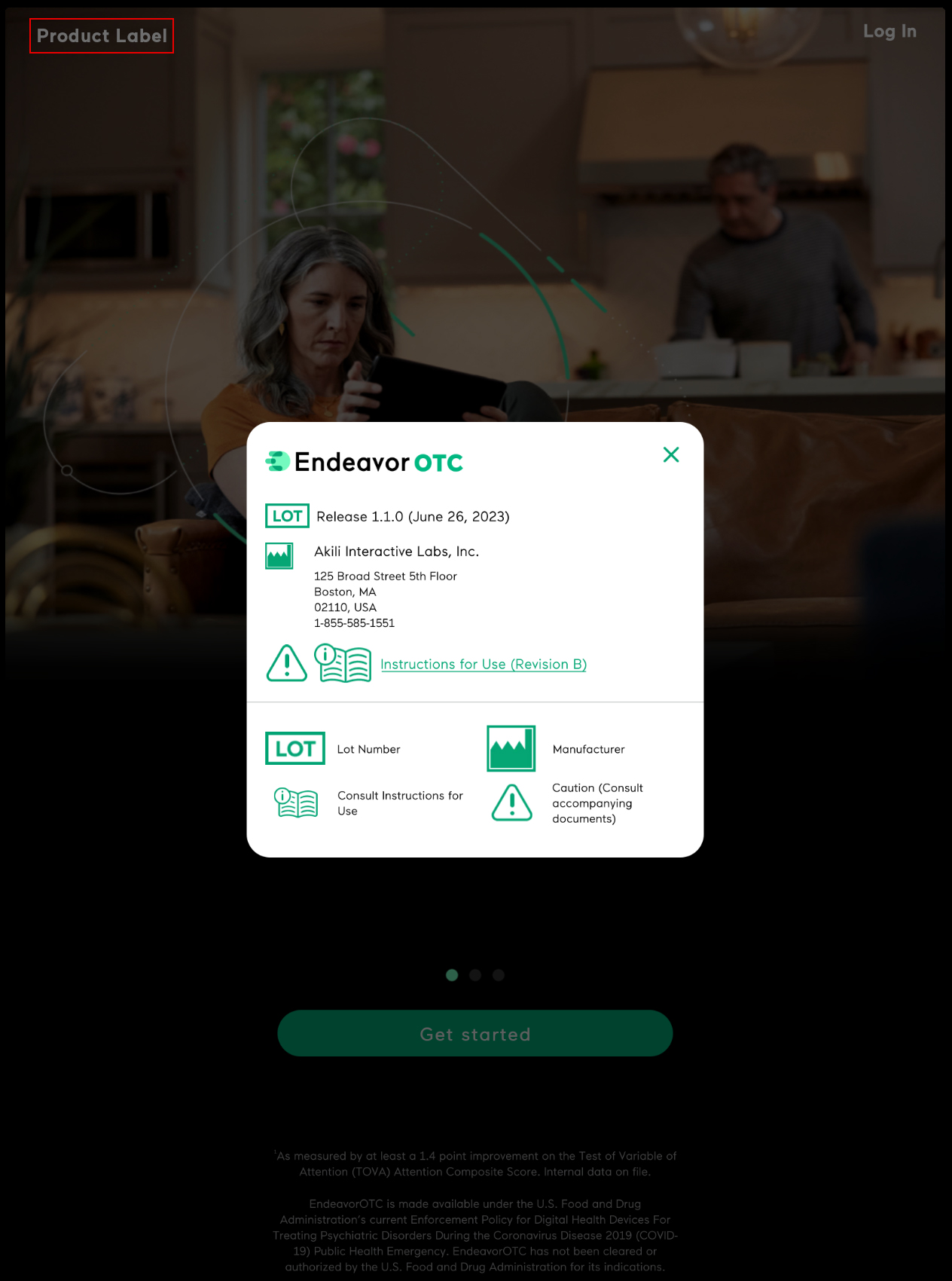Tracking Your Treatment: How the Focus Score Can Help

We built EndeavorOTC to help people improve their ADHD symptoms naturally. Based on our data, users report a reduction in their symptoms after around four to six weeks of using the treatment, but that doesn’t mean treatment isn’t working more quickly.
To demonstrate EndeavorOTC’s impact, our data science, cognitive science, and clinical teams worked together to build the Focus Score– an indicator that is able to measure users’ sustained attention. To understand how it works, we sat down with our Director of Data Science, Andy Heusser, and Head of Cognitive Science, Tony Simon.
1. How does the Focus Score work?
Tony: To make sure the treatment is optimized for each person, the difficulty and the timing of the treatment is constantly adjusted to keep you right at the edge of what you’re capable of. So it can be a little stressful but that’s the way that we have to require the brain to work in order to make it more functional. And that’s what we’re really getting at with the Focus Score, measuring your improvement on underlying cognitive processes that are engaged each time you use the treatment.
Andy: To add onto that, you are doing two tasks simultaneously. That is the magic trick. When you’re multitasking, your brain is competing for resources to be able to perform each task. It’s that multitasking that we believe is really leading to the benefits we see in clinical outcomes– and performance during multitasking is what the Focus Score is designed to measure.
2. Why did you create the Focus Score?
Andy: Our customers told us they wanted a way to monitor their progress from the treatment in real time.
Tony: Cognitive changes are small and hard to track outside of a clinical test. But because we have all of this data, we were able to make observable something that would otherwise be invisible to the naked eye.
Andy: The Focus Score is the promise of digital therapeutics: being able to collect data and give feedback that guides the treatment in real time.
3. What are the metrics behind the Focus Score?
Tony: The first one is the “navigation threshold,” which is the user’s ability to navigate the ship down the track and deal with the obstacles. As you succeed, the task gets more difficult, but if you’re struggling, the difficulty will go down.
The other significant piece is the targeting component. This is the measure of how quickly a user can identify a target, analyze its features, and react accordingly, either by capturing it or ignoring it. This is a well known variable in cognition called selectivity. And for this component, we’re looking for two things: how quickly you react to the target, and how accurate your reactions are. All of this information is combined in the Focus Score.
Andy: And importantly, these factors are what we think really matter in life. Accurately and quickly managing distractions, and then coming back to your task at hand is a lot like the real world. The skills are analogous to what we’re trying to solve for users.

4. How does user engagement impact the Focus Score?
Andy: Unlike taking a pill, this treatment really does require meaningful engagement to improve, and the Focus Score is really sensitive to that engagement. If you’re really distracted, that’s gonna be reflected in this score.
Tony: What’s different about EndeavorOTC compared to medication is that EndeavorOTC is actually changing the functioning of the very cognitive system that is not optimal. If that cognitive system is not meaningfully engaged, it can’t change itself.
Swallowing a pill changes the neurotransmitters in your brain, and enables you to cope better, but as soon as you stop taking that medication, the effect goes away. But even after you stop using EndeavorOTC for a while, that cognitive system is still working well for a period of time, and then you can leverage that in your everyday tasks. And people have reported in our studies that they are better able to do those everyday tasks.
5. What do you want users to know about the Focus Score?
-
An increased Focus Score does not mean ADHD is cured
Andy: We don’t want users to think that when their Focus Scores goes up, their ADHD is being cured. The result we’re showing you is your brain is getting stronger. But that doesn’t mean that we’ve removed the diagnosis.
-
You’re making progress even if the Focus Score isn’t increasing
Tony: Even if the Focus Score remains the same, that’s also an indication that you are doing better, because if you have the same performance in a more complicated situation, you’re clearly now able to handle more complexity, more difficulty, more speed.
Sometimes the score will go down a bit because you’re being challenged more, and that’s exactly what the treatment was designed to do. In order to keep the brain and the cognitive system constantly improving, the treatment constantly pulls the user towards more difficult tasks.
-
Use the Focus Score graph to track progress
Andy: Everybody is different, but there is a prototypical pattern that we tend to see in the Focus Score graphs. We often see an initial period of rapid improvement, and then after one or two weeks, we see a more gradual, slower improvement. And that’s actually where we think a lot of the true cognitive benefit is happening.
Tony: That very steep curve is something you see in almost anything you learn, since this tends to reflect the basic motor skills you have to quickly master for almost any new task. Once you’re past that curve, that’s where the specific cognitive processes are getting better. As we said earlier, cognitive changes are very small, very slow, very gradual. But we can actually surface them with the Focus Score, to help you track your progress.
-
The Focus Score maps onto clinical outcomes
Tony: It turns out Focus Score correlates with the clinical measures that we already had on people. So it’s a very nice validation of that. And we show that Focus Score does actually change during the treatment, meaning, it’s actually capturing the progress of those cognitive processes.
We’re looking at ways to personalize the Focus Score aspect even more to you and to your life, and what your capabilities to engage with the treatment are and so we believe it’s just gonna get better and better and better. But we’re very proud of having this first thing that is really unlike anything else that we have seen. We’ve shown that Focus Score does have a strong relationship with the measures that other people in the world would use, such as standardized clinical measures or the subjective ratings of somebody’s functioning. In that way, we know that the improvement in the attentional system that is measured by the Focus Score is connected to everyday abilities in the real world.
5. What can readers expect to see from EndeavorOTC next?
Tony: We’re very proud of building a product that is really unlike anything else out there. And we’ve shown that the Focus Score specifically does have a strong relationship with clinical measures and the subjective ratings of a user’s performance. As we continue to improve the product, we’re looking at ways to personalize the Focus Score even more to individual users and their lives.
Andy: We are continuously doing research and working on this system– stay tuned, because we have lots of exciting updates to come.
About the Speakers
-
Tony Simon, Ph.D. is VP, Head of Cognitive Science at Akili Interactive. Before joining, Tony spent over 30 years in cognitive neuroscience and particularly the last 20 years in translating that science into treatments. He also co-founded and was CEO and Chief Science Officer of Cognitive, a digital neurotherapeutics company.

-
Andy Heusser is the Director of Data Science at Akili Interactive and has been with the company for over five years. Prior to joining Akili Interactive, he conducted cognitive neuroscience research on memory and memory training for over a decade.

